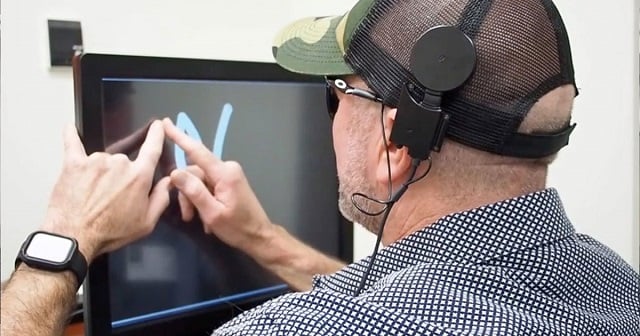
The device works by skipping the eye and relaying visual information from a camera straight to electrodes implanted in the brain, according to a new paper published in the journal Cell.
The new device is different than its predecessor visual aids that treated each electrode like a pixel.
It’s a stepping stone towards “visual prosthetic” that would allow the blind to fully regain vision even though will take many years to develop such a device.
“When we used electrical stimulation to dynamically trace letters directly on patients’ brains, they were able to ‘see’ the intended letter shapes and could correctly identify different letters,” senior author Daniel Yoshor from the Baylor College of Medicine in Houston said in a statement.
Fans trash EA's new 'sparkly' scrabble app
“They described seeing glowing spots or lines forming the letters, like skywriting.”
Researchers have created something unique; participants were able to “see” the outlines of shapes, thanks to complex sequences of electrical pulses sent to their brains.
“Rather than trying to build shapes from multiple spots of light, we traced outlines,” first author Michael Beauchamp, professor at Baylor College of Medicine in Houston, said in the statement.
“Our inspiration for this was the idea of tracing a letter in the palm of someone’s hand,” added Beauchamp.
“The ability to detect the form of a family member or to allow more independent navigation would be a wonderful advance for many blind patients,” Yoshor told Live Science.
“The primary visual cortex, where the electrodes were implanted, contains half a billion neurons,” Beauchamp said in the statement.
“In this study, we stimulated only a small fraction of these neurons with a handful of electrodes.”
Scientists track rate of Covid-19 in world sewers
Therefore “an important next step will be to work with neuro engineers to develop electrode arrays with thousands of electrodes, allowing us to stimulate more precisely,” he added.
“Together with new hardware, improved stimulation algorithms will help realise the dream of delivering useful visual information to blind people.”
The development of the device is still at its early stages but once perfected such a device could prove beneficial for visually impaired people.
This article originally published on Futurism.
1737716039-0/BeFunky-collage-(35)1737716039-0-405x300.webp)
1737716140-0/fizza-(96)1737716140-0-165x106.webp)
1737715050-0/BeFunky-collage-(34)1737715050-0-165x106.webp)
1737714711-0/fizza-(95)1737714711-0-165x106.webp)
1737714086-0/zendaya-(2)1737714086-0-165x106.webp)




1737545587-0/Tribune-N-(7)1737545587-0-270x192.webp)


1737614355-0/Express-Tribune-(1)1737614355-0-270x192.webp)

1737546248-0/Waqas-(13)1737546248-0-270x192.webp)







COMMENTS
Comments are moderated and generally will be posted if they are on-topic and not abusive.
For more information, please see our Comments FAQ